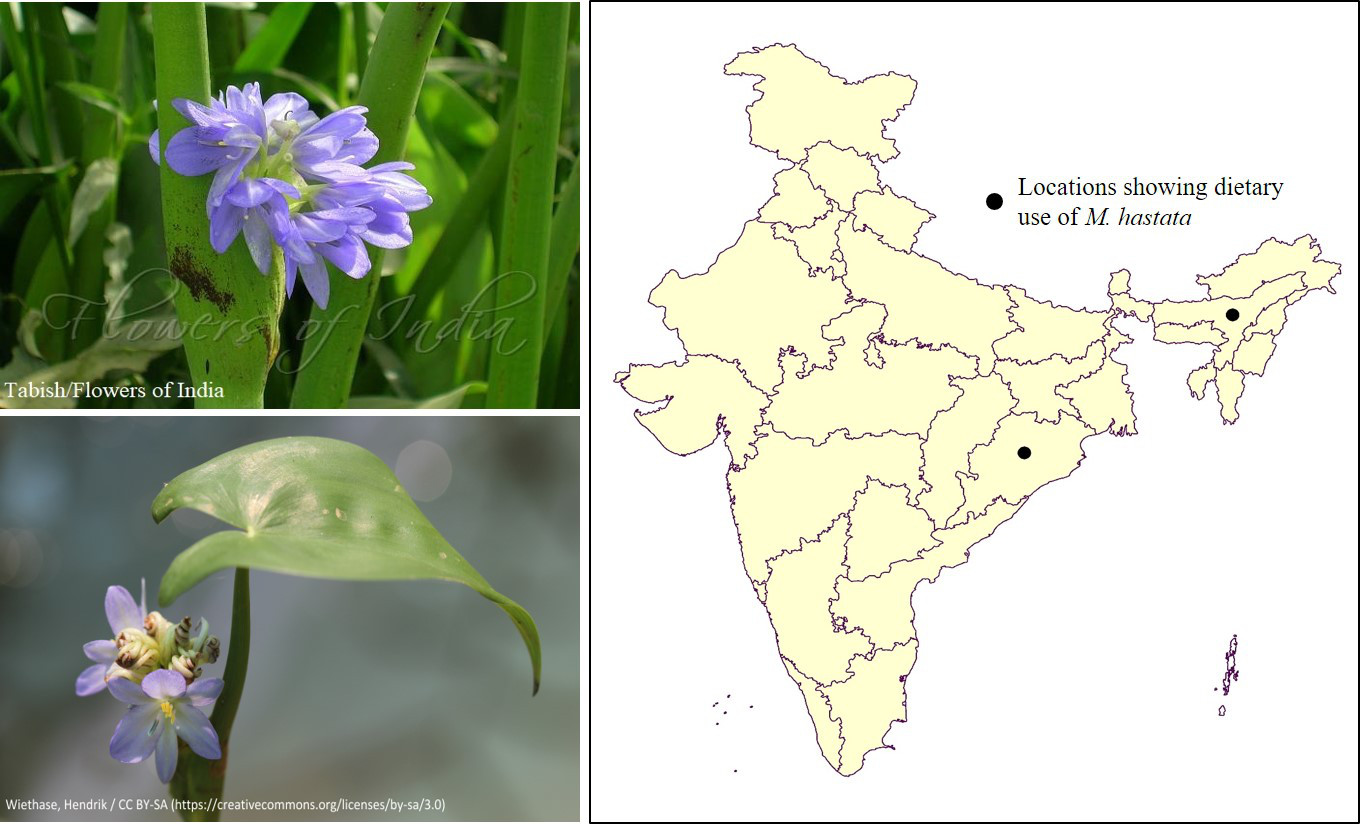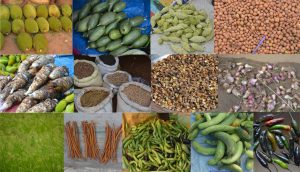Family: Pontederiaceae
This aquatic plant is a common weed of the rice fields of India. It is usually seen in shallow waters, erect, and occasionally creeping, with floating leaves and rhizomatous stem. It is only recently that the edibile and the nutritional value of leaves and flowers of this plant are recognized among nutrition enthusiastic. Flowers, leaves and rhizomes are rich in mineral content and are used as alternative green vegetables by rural populations. In Odisha, young inflorescence has also been accepted as food. In Assam, it is called as Bhaat Mateka. The Tai ahom tribes of upper Assam cook it with pork, chicken and fish. It can be used as a vegetable and stir fried with potatoes, green chillies, garlic onion and ginger. The young shoot is also acceptable as food among the Dimasa tribe of the Barak valley of Assam. The ‘pola’ as it is known in the ‘Kuttanad’ region of Kerala is a menace in the shallow water bodies, rice fields, and canals. But nowadays the tribes are earning a decent income as the weeds are bought to feed the ducks and also for making handicrafts.



